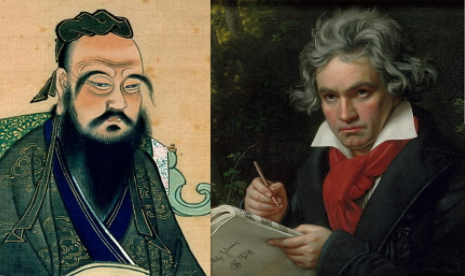Music is more than just organized sound—it is a living, evolving art form shaped by creativity, emotion, and cultural influences. From ancient chants to AI-generated compositions, the creative process behind music has continuously transformed, giving birth to new genres, techniques, and experiences. This article explores the essence of musical creativity, its sources of inspiration, and how artists push boundaries to redefine what music can be.
I. What Is Musical Creativity?
Musical creativity is the ability to imagine, compose, and perform original sounds in ways that resonate with listeners. It involves:
-
Improvisation – Spontaneous musical expression (e.g., jazz solos, Indian ragas).
-
Composition – Structured creation of melodies, harmonies, and rhythms.
-
Innovation – Experimenting with new techniques, instruments, or technologies.
Unlike rigid formulas, true creativity thrives on unpredictability and emotion.
II. The Sources of Musical Inspiration
Where do musicians find their ideas? Creativity often stems from:
1. Nature and the Environment
-
Vivaldi’s Four Seasons mimics bird calls and thunderstorms.
-
Traditional Japanese Shakuhachi flute music imitates wind and water.
2. Emotion and Personal Experience
-
Beethoven’s Moonlight Sonata reflects despair and longing.
-
Billie Eilish’s Happier Than Ever channels raw vulnerability.
3. Cultural and Historical Influences
-
Flamingo guitar blends Romani, Moorish, and Spanish traditions.
-
Afrobeat (Fela Kuti) merges jazz with West African rhythms.
4. Technology and Experimentation
-
The Beatles’ Revolution 9 used tape loops and avant-garde techniques.
-
Daft Punk’s Random Access Memories combined live instruments with electronic production.
III. Breaking the Rules: How Geniuses Redefine Music
Some of the most groundbreaking artists ignored conventions:
1. Classical Mavericks
-
Mozart improvised entire concertos on the spot.
-
Stravinsky’s Rite of Spring caused riots with its dissonance and primal rhythms.
2. Jazz and Improvisation
-
Miles Davis abandoned traditional structures in Kind of Blue.
-
John Coltrane’s Giant Steps introduced revolutionary chord progressions.
3. Rock and Electronic Revolution
-
Jimi Hendrix redefined guitar playing with feedback and distortion.
-
Kraftwerk pioneered synth-pop, shaping modern electronic music.
4. Modern Genre-Blending
-
Kendrick Lamar fuses jazz, hip-hop, and spoken word.
-
BTS blends K-pop with R&B, EDM, and traditional Korean sounds.
IV. The Future of Musical Creativity
What’s next for music innovation?
1. AI and Algorithmic Composition
-
Tools like OpenAI’s Jukebox generate original songs in any style.
-
Holly Herndon’s PROTO used AI as a collaborative band member.
2. Virtual and Augmented Reality
-
Artists like Travis Scott (Fortnite concert) redefine live performances.
-
VR music apps let users “play” instruments in digital spaces.
3. Biofeedback and Brainwave Music
-
Experimental composers use EEG headsets to convert brainwaves into sound.
-
Environments adapt music in real-time based on listener emotions.
4. Crowdsourced and Generative Music
-
Radiohead’s Kid A Mnesia Exhibition lets fans interact with music in a virtual gallery.
-
Endless AI-generated soundscapes (e.g., ambient “infinite” albums).
Creativity as the Soul of Music
Musical creativity is an ever-changing force—driven by emotion, rebellion, and curiosity. From ancient shamans to AI composers, the desire to create something new remains universal. As technology and culture evolve, so will the ways we imagine, compose, and experience music.
What’s your favorite example of musical creativity? Could AI ever replace human artistry? The debate continues, but one thing is certain: as long as there are dreamers, music will keep evolving.

No responses yet